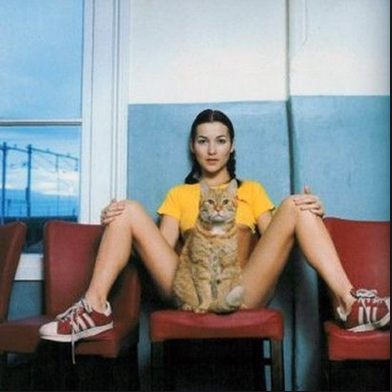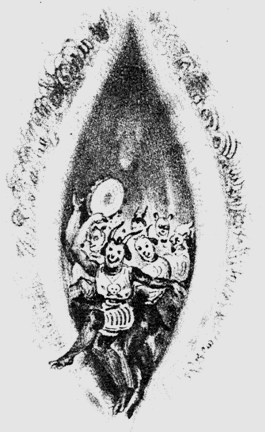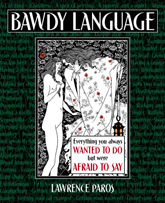It’s not unusual to insult people by identifying them with their body parts. Calling someone a prick is a commonplace insult, but we reserve use of the expression for males of a particular character, and not for men in general. Cunt, on the other hand, is not only a term filled with contempt and disdain, but it is applied indiscriminately, regardless of the person’s character, insulting not only the person toward whom the remark is aimed, but all women everywhere.

Words Fail
Man has not only spoken ill of the cunt but has also described it in glowingly romantic terms. According to Karen Horney, the noted psychiatrist, this makes very good sense. Both approaches reflect man’s deep-seated dread of the female genitalia; each in a different way helps allay this fear. By making little of the cunt, he convinces himself that there is nothing to fear from so mean an object. Through its idealization he insures the unlikelihood of harm from so divine a being.
And we have no shortage of superlatives to describe it. We have everything from the dearest bodily part (Shakespeare) to the best part (Earl of Dorset), the best in Christendom (Rochester), and la belle chose (Chaucer). For some, it’s been just plain out of this world — as in heaven (18thC).

Yet that nagging fear is always there beneath the surface. It’s also been sheer hell (18thC) and a devilish thing (18thC); so much so that many would dispense with the entire matter by put- ting the Devil into hell (18thC).
Some reserved judgment, as did John Donne with the best- worst part. Others extolled it as a masterpiece and featured it prominently as the star (16thC), depicted ofttimes as pretty- pretty (17thC) and indescribably quaint, as in Chaucer’s “Miller’s Tale”: “Full prively he caught her by the queinte.”3
At its lowest, this cloven stamp of female distinction (18thC) has been reduced to a suck-and-swallow, a man (or fool) trap, a butter boat, an oystercracker, and sperm-sucker (19thC). At the same time, it’s been elevated to a position of power as the control- ling part (19thC) and the regulator (late 18thC–19thC).
It’s almost as though they forgot its more mundane functions as the water box (19thC), or streamstown (c. 1820–90), the gener- ating or brat-getting place (19thC), the nursery, and the bath of birth (early 20thC).
Read more – Bawdy Language Book – http://bawdylanguage.com



Leave a Reply